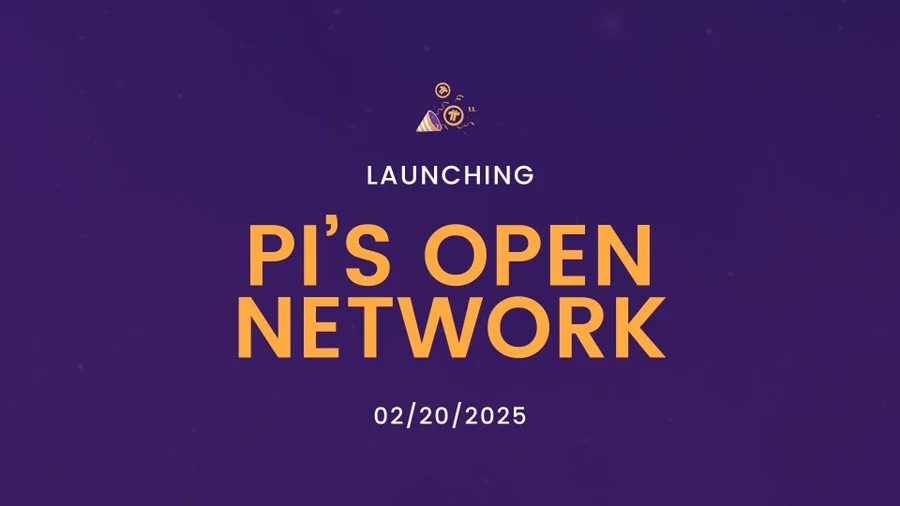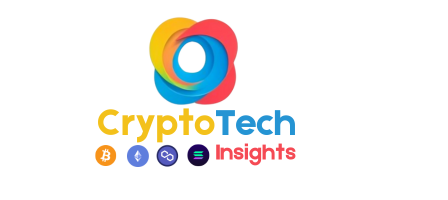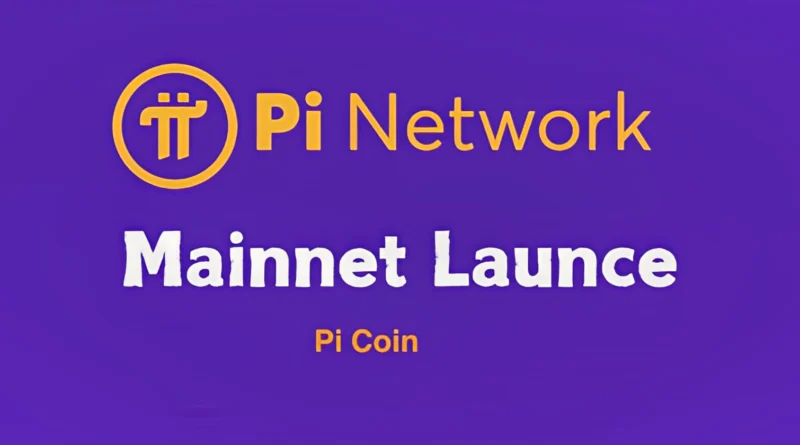Pi Network’s Mainnet Launch: A New Era for Mobile Cryptocurrency
Introduction
The world of cryptocurrency is on the brink of another significant transformation with the eagerly awaited mainnet launch of Pi Network, a project that has captivated crypto enthusiasts with its unique approach to mining cryptocurrency directly from smartphones. As we draw closer to the launch date, set for February 20, 2025, at 8 AM UTC, here’s a detailed exploration of what this means for the crypto ecosystem, its implications, and what users can anticipate.
Table of Contents
What is Pi Network?
Pi Network was founded in 2019 by a group of Stanford graduates, including Dr Nicolas Kokkalis, Dr Chengdiao Fan, and Vincent McPhillip. Their mission was simple: make cryptocurrency accessible to everyone, not just tech-savvy individuals or those with expensive mining rigs.
Unlike Bitcoin and many other cryptocurrencies that require substantial computational power to mine, Pi Network allows users to mine Pi tokens using their smartphones. The process is energy-efficient and doesn’t drain battery life, making it a user-friendly option for those new to crypto.
Pi Network emerged with the vision of democratizing cryptocurrency mining, making it accessible to the masses without the need for sophisticated hardware. Pi introduced a mobile app for mining Pi by simply tapping a button once every 24 hours. This user-friendly approach, alongside the promise of a widely accessible digital currency, has attracted millions of users globally.

Pi Network’s The Journey to Mainnet
Pi Network’s development has been divided into multiple phases:
- Phase 1: Design and Token Distribution
- The initial phase focused on building a user base and testing the mining mechanism.
- Early adopters were incentivized to invite others, leading to exponential growth.
- Phase 2: Testnet
- Launched in March 2020, the Testnet phase allowed developers to test the blockchain’s functionality and security.
- This phase also enabled the creation and testing of Pi apps and smart contracts.
- Phase 3: Mainnet Launch
- The final phase involves transitioning to a fully decentralized blockchain.
- Users will be able to transfer their mined Pi tokens to the Mainnet, and Pi will become a fully tradeable cryptocurrency.
Key Features of Pi Network’s Mainnet
The Mainnet launch is a significant milestone for any blockchain project. For Pi Network, it represents the culmination of years of development and testing. Here are some of the key features:
- Decentralization:
- The Mainnet will mark the Pi Network’s transition from a centralized model to a decentralized one, ensuring that no single entity has control over the network. With over 100 dApps ready for the mainnet, Pi Network has fostered an ecosystem capable of supporting diverse applications from gaming to financial services.
- User Migration:
- Over 8 million users have successfully moved their Pi to the mainnet, exceeding the initially set goal of 10 million migrations.
- Token Transfers:
- Users will finally be able to transfer their Pi tokens to external wallets and exchanges, making them fully tradeable.
- KYC Verification:
- To prevent fraudulent activity, Pi Network has implemented a Know Your Customer (KYC) process. Only verified users will be able to transfer their tokens to the Mainnet. More than 18 million users have completed the KYC process, ensuring compliance with international financial standards, a critical step for widespread adoption.
- Ecosystem Expansion:
- The Mainnet launch will pave the way for new Pi apps and services, including decentralized applications (dApps) and marketplaces.
- Smart Contracts:
- Developers will be able to deploy smart contracts on the Pi blockchain, opening up opportunities for innovation and utility.
What to Expect from the Pi Network’s Mainnet Launch
- Trading on Exchanges: A significant outcome of the main net launch will be Pi Coin’s listing on various cryptocurrency exchanges:
- OKX has confirmed they will list Pi Coin, marking a major milestone for Pi to interact beyond its internal network.
- MEXC will also be offering Pi trading from the launch day, February 20, 2025.
- HTX (formerly Huobi) had been trading Pi IOUs but plans to list the actual Pi token post-launch.
- Bitget is another exchange that has announced plans to introduce Pi/USDT trading pairs.
- Price Dynamics: Before the main net, Pi’s value was speculative through IOUs, with prices hovering around $42.21. Post-launch, market forces will truly determine Pi’s value, potentially leading to volatility as it establishes its market position.
- Network Upgrades: The Pi Core Team has been proactive, with updates like the v19 protocol upgrade, focusing on security and scalability to ensure a seamless transition.
Why the Pi Network’s Mainnet Launch Matters
The transition to Mainnet is a critical step in Pi Network’s evolution. Here are several reasons why this launch is so important:
- Legitimacy and Credibility
- Moving to the Mainnet demonstrates that Pi Network is more than just a concept. It signals to the cryptocurrency community that the project is serious about delivering on its promises.
- Increased Utility
- The ability to transfer Pi tokens and use them in real-world applications will enhance the token’s utility and value.
- Economic Opportunities
- With a tradeable token, users can buy, sell, and trade Pi, creating new economic opportunities within the ecosystem.
- Community Empowerment
- Decentralization empowers users by giving them control over their assets and the direction of the network.

Potential Challenges for Pi Network
While the Mainnet launch is an exciting development, it also comes with challenges:
- Regulatory Scrutiny
- As Pi Network becomes a fully tradeable cryptocurrency, it may face increased regulatory scrutiny. Compliance with global regulations will be essential. Increased visibility from a mainnet launch will likely attract more regulatory attention, potentially leading to compliance challenges or restrictions.
- Scalability Issues
- Rapid growth could put pressure on the network’s infrastructure. Ensuring scalability and performance will be crucial.
- Security Risks
- The transition to Mainnet introduces new security risks. Robust security measures will be necessary to protect user funds and data. With the network going open, security will be put to the test, necessitating robust defences against potential cyber threats.
- Adoption and Liquidity
- For Pi to succeed, it must achieve widespread adoption and liquidity. This will require partnerships, marketing efforts, and a thriving ecosystem of applications. Converting Pi Network’s massive user base into active participants in an open economy will be a challenge. Real-world utility and adoption are key for Pi’s longevity.
Community and Engagement
Pi Network’s community is one of the largest in the blockchain sphere, with over 70 million engaged users. This community has both driven the project forward and expressed impatience with past delays.
- X (Twitter) Sentiment: The buzz on platforms like X is palpable, with hashtags like #PiNetwork and #PiMainnet trending. The sentiment is a blend of excitement and caution.
- Educational Efforts: Pi Network’s commitment to educating its community about cryptocurrency could significantly contribute to sustained engagement and success.
Pi Network’s Potential Impact on the Crypto Market
- Democratization of Mining: Pi’s model could redefine cryptocurrency mining by making it inclusive and less energy-consuming.
- Market Expansion: If Pi gains traction for peer-to-peer transactions and real-world use, it could broaden the crypto market’s user base.
- Innovation in Blockchain: Pi’s success might encourage other blockchain projects to prioritize accessibility and user experience.
How Pi Network Users Prepare for the Mainnet Launch
If you’re a Pi Network user, here are some steps to take before the Mainnet launch:
- Complete KYC Verification
- Ensure that you complete the KYC process to be eligible for token transfers.
- Secure Your Account
- Use a strong, unique password and enable two-factor authentication (2FA) for added security.
- Understand the Wallet
- Familiarize yourself with Pi Network’s wallet and how to transfer tokens.
- Stay Informed
- Follow official Pi Network announcements and updates to stay informed about the Mainnet launch timeline.
- Educate Themselves:
- Understand the new ecosystem dynamics, including trading, wallet security, and more.
- Engage with the Community:
- Active participation in discussions, dApps, and governance can enhance your experience and influence in the network.
The Road Ahead for Pi Network
The Mainnet launch is just the beginning of a new chapter for Pi Network. Looking ahead, the team has ambitious plans for further development and expansion:
- Ecosystem Growth
- Encouraging developers to build dApps and services on the Pi blockchain will be a priority.
- Partnerships and Integrations
- Strategic partnerships with businesses and organizations could drive adoption and utility.
- Community Engagement
- Continued engagement with the community will be essential for fostering trust and loyalty.
- Innovation
- The Pi Network team will likely explore new features and improvements to enhance the platform’s user experience.
Conclusion
The launch of Pi Network’s mainnet is a landmark event not just for Pi but for the cryptocurrency sector at large, showcasing a model where anyone with a smartphone can mine digital currency. This launch, however, brings about new challenges, scrutiny, and the need for community involvement to fully realize Pi’s vision. As we approach February 20, 2025, the world watches to see how Pi navigates these waters, with far-reaching implications for its users and the blockchain community.
For users and enthusiasts, the Mainnet launch offers an opportunity to be part of a revolutionary movement in the world of cryptocurrency. By staying informed, securing your assets, and engaging with the community, you can maximize your experience with Pi Network as it embarks on this exciting new chapter. Whether you’re a seasoned crypto investor or a newcomer, Pi Network’s journey to Mainnet is one to watch closely.
FAQs About Pi Network Mainnet Launch
-
When is the Pi Network Mainnet Launch Happening?
The Pi Network Open Mainnet is scheduled to launch on February 20, 2025, at 8 AM UTC. This marks the transition from an enclosed network to an open ecosystem where Pi can be traded externally.
-
What Does the Mainnet Launch Mean for Pi Users?
The mainnet launch allows Pi coins to move from being mined and held within the Pi ecosystem to being transferable and tradable on external cryptocurrency exchanges. It signifies Pi becoming a fully functional cryptocurrency with real-world utility potential.
-
Which Exchanges Will List Pi Coin After the Launch?
Several exchanges have confirmed they will list Pi Coin post-launch, including:
OKX: A major global exchange ready to support Pi trading.
MEXC: Will offer Pi trading starting February 20, 2025.
HTX (Huobi): Previously traded Pi IOUs and plans to list the actual token.
Bitget: Will introduce Pi/USDT trading pairs. More exchanges may announce listings as the launch date approaches. -
Do I Need to Complete KYC for the Mainnet?
Yes, completing KYC (Know Your Customer) verification is essential to participate fully in the mainnet. Over 18 million users have already completed this step, ensuring compliance and enabling them to migrate their Pi to the mainnet wallet.
-
How Do I Migrate My Pi to the Mainnet?
To migrate your Pi:
Ensure you’ve completed KYC in the Pi app.
Open the Pi app, go to the “Mainnet” section, and follow the prompts to transfer your balance to the mainnet wallet.
Over 8 million users have already migrated, meeting the network’s target for the open launch. -
What Will Happen to My Pi Coins After the Launch?
Once migrated to the main net, your Pi coins will be usable within the Pi ecosystem and tradable on listed exchanges. However, unmigrated coins may remain locked until you complete the migration process.
-
What will the price of Pi Coin be after the Mainnet launch?
The pre-launch price of Pi IOUs was around $42.21, but this was speculative. The actual value post-launch will depend on market supply and demand once trading begins on exchanges like OKX, MEXC, HTX, and Bitget. Expect volatility as the market stabilizes.
-
Is Pi Network Legitimate, or Is It a Scam?
Pi Network has a vast community of over 70 million users and has been transparent about its development phases. The mainnet launch and exchange listings add credibility, but like any crypto project, it carries risks. Sceptics point to delays, while supporters highlight its growing ecosystem with over 100 dApps.
-
What conditions were met for the Open Mainnet?
Pi Network set three key conditions, all of which have been met:
Over 10 million users migrated (achieved with 8 million+ and counting).
More than 100 mainnet-ready dApps developed.
A stable and secure network, evidenced by recent upgrades like v19. -
Can I Still Mine Pi After the Mainnet Launch?
Mining will likely continue for some time post-launch, but the rate and availability may change as the network shifts focus to transactions and ecosystem growth. Check the Pi app for updates on mining policies after February 20, 2025.
-
How Can I Use Pi Coins After the Launch?
Post-launch, you can:
Trade Pi on exchanges like OKX, MEXC, HTX, and Bitget.
Use Pi within the ecosystem for transactions on supported dApps.
Potentially spend Pi with merchants or peers as adoption grows. -
What Are the Risks of Investing in Pi Network?
Risks include:
Price volatility after launch.
Regulatory uncertainties affecting trading or usage.
Adoption challenges if real-world use cases don’t materialize. Always research and invest cautiously, as with any cryptocurrency. -
Why Has the Mainnet Launch Taken So Long?
Delays were due to the Pi Core Team’s focus on building a secure, scalable network and ensuring a robust ecosystem with KYC compliance, user migration, and dApp development. The team aimed to avoid rushed launches that could compromise stability.
-
How Do I Stay Updated on the Launch?
Follow official Pi Network announcements via the app, their website, or social media. Community discussions on X (using hashtags like #PiNetwork or #PiMainnet) also provide real-time insights.
-
Will Pi Network Be a Game-Changer in Crypto?
Pi’s potential to democratize mining and its massive user base suggest it could influence the crypto space. However, its success hinges on post-launch adoption, utility, and competition with established coins like Bitcoin and Ethereum.

